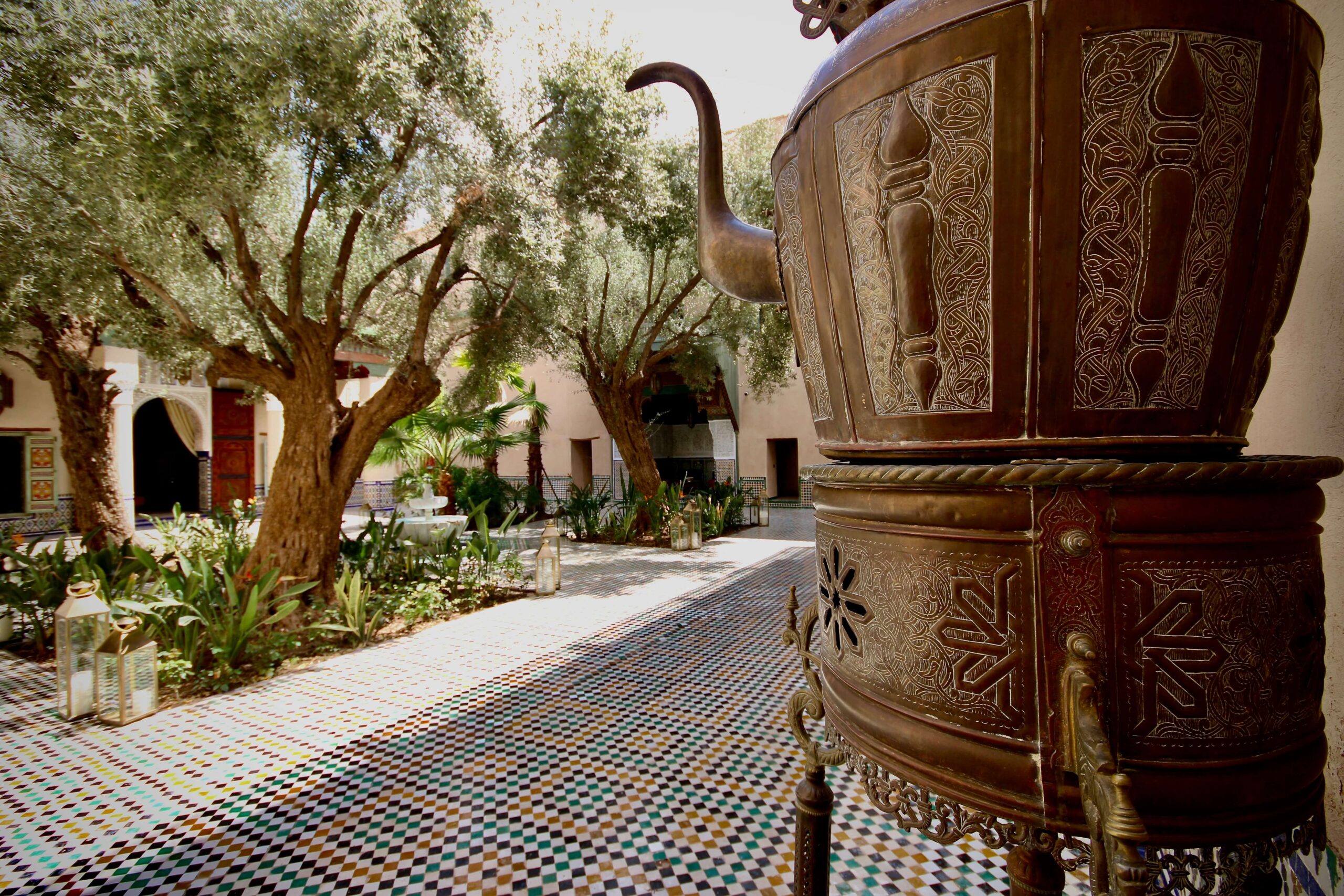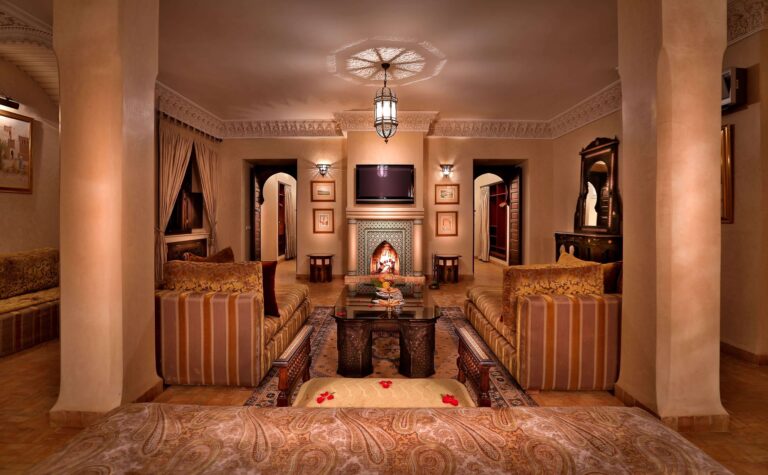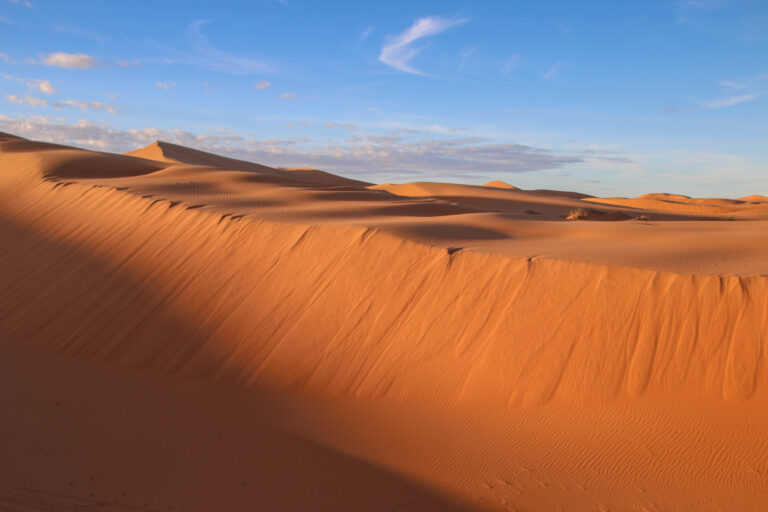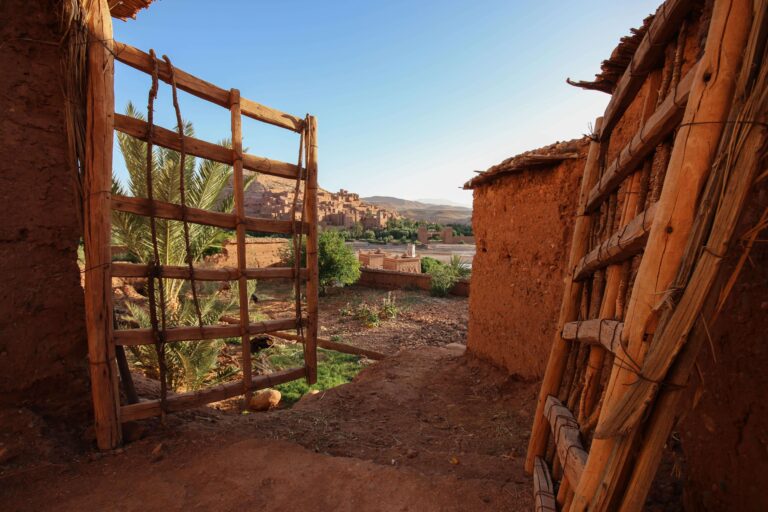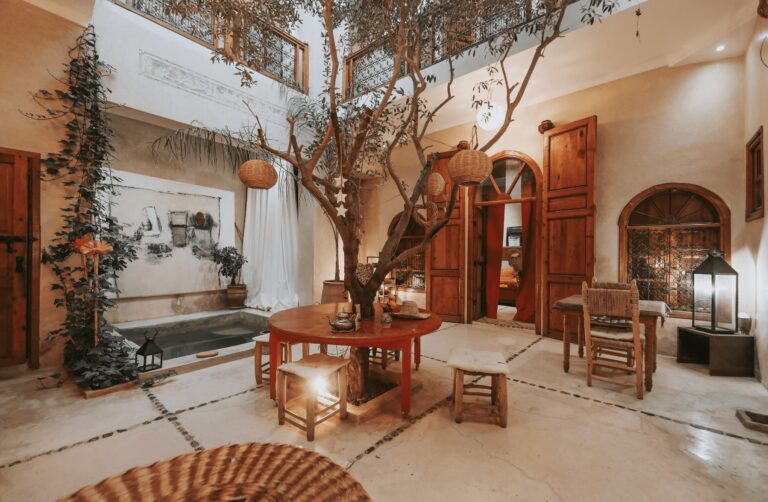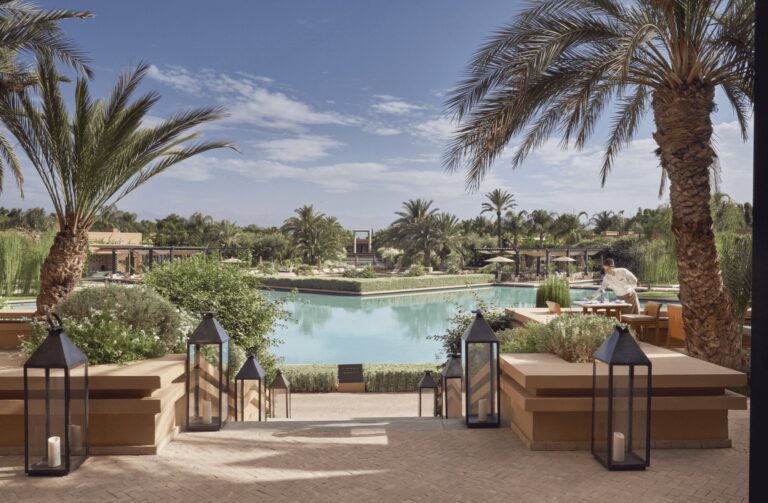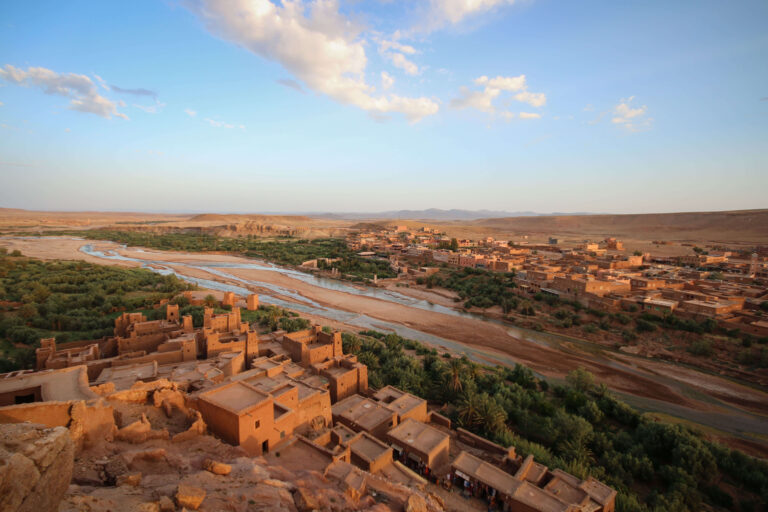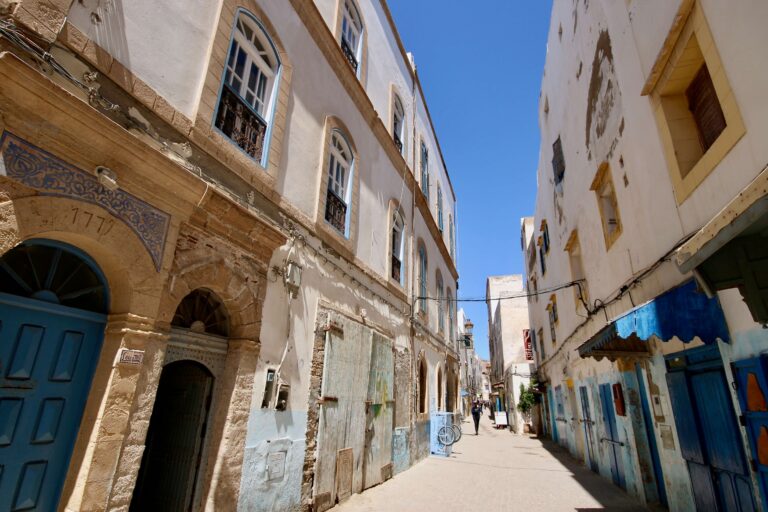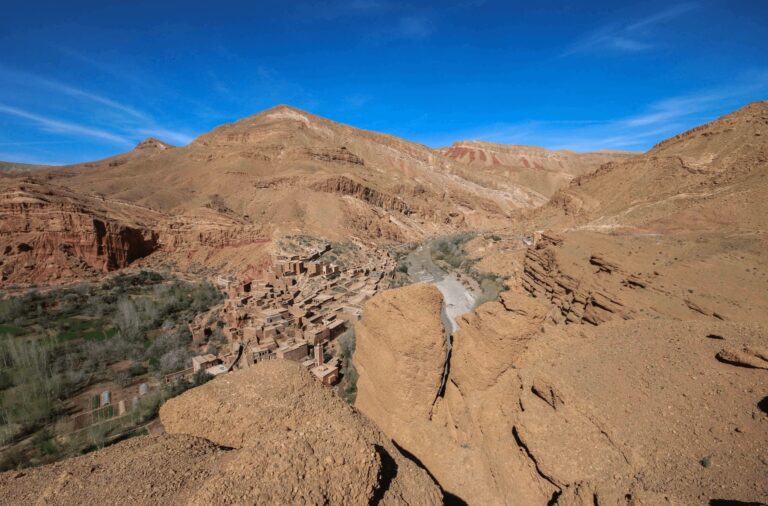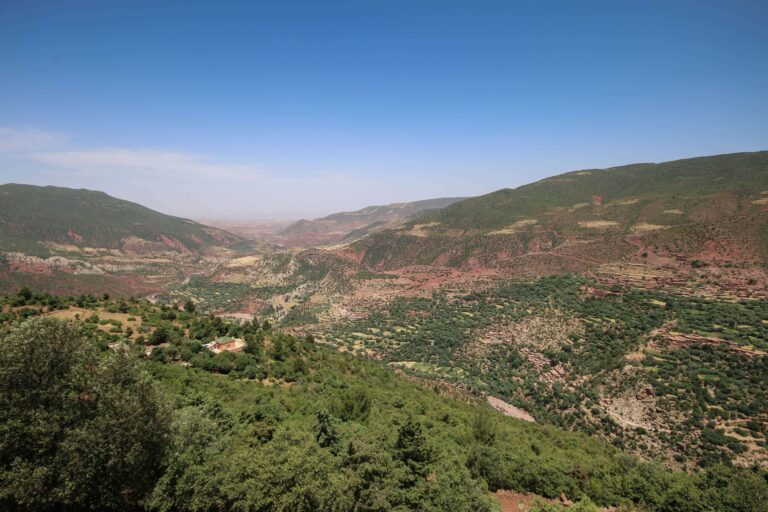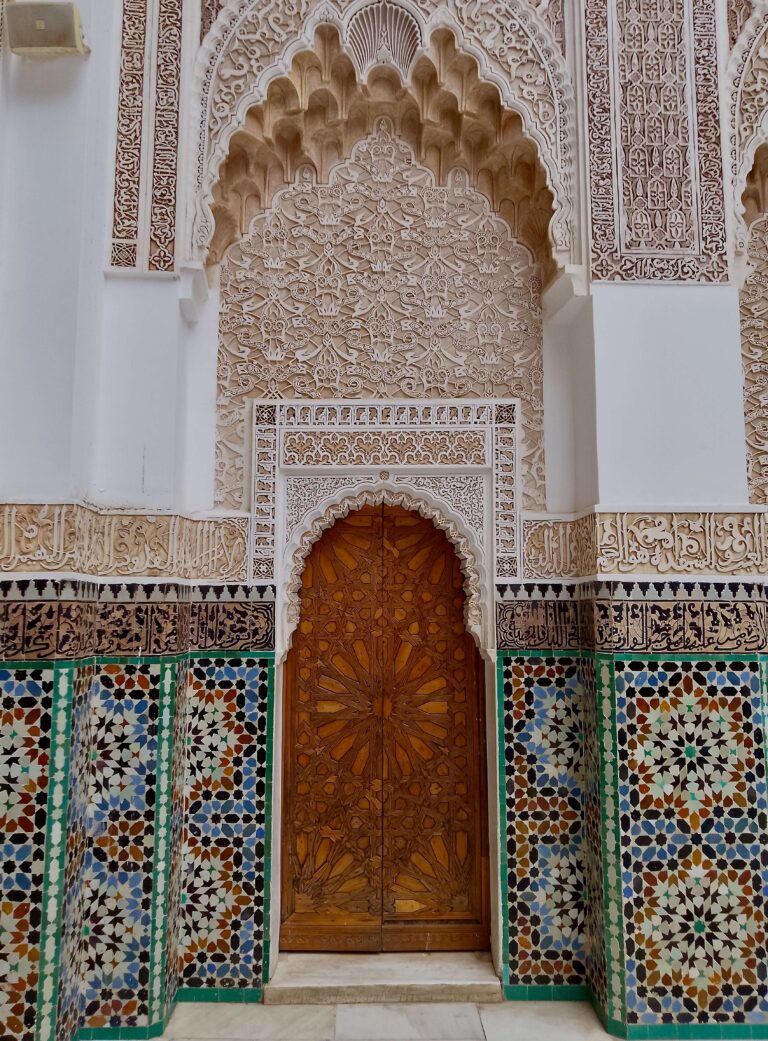12 Best Museums in Marrakech: Culture + Art + Ethnography
From historic dars to modern galleries and creatively landscaped gardens, discover 12 of the best museums in Marrakech.
Step foot in this ancient Moroccan metropolis and it’s hard not to get swept up in the energised buzz that awaits around every corner. While Marrakech can be overwhelming, it also boasts an abundance of captivating museums that offer a wealth of insights into the city.
When the chaos of the medina becomes too much, these serene institutions are my go-to for an hour or two of “quiet time”.
To truly experience the depth of Marrakech’s cultural heritage, I’d highly recommend carving out some time in your itinerary to explore the city’s museums and galleries. Whether you’re interested in Amazigh culture, historic photography or Morocco’s links to international fashion, there really is something for everyone.
In this article, I’ll introduce 12 of the best museums in Marrakech, from architectural gems to artistic gardens.
For more information about things to see and do in Morocco’s “Red City”, check out my Essential Travel Guide to Marrakech.
If you’re looking for accommodation inspiration, I’ve put together some of my top picks for riads in the Marrakech medina.
Alternatively, you can find a list of highly-rated Marrakech cooking classes or the best day trips from Marrakech.
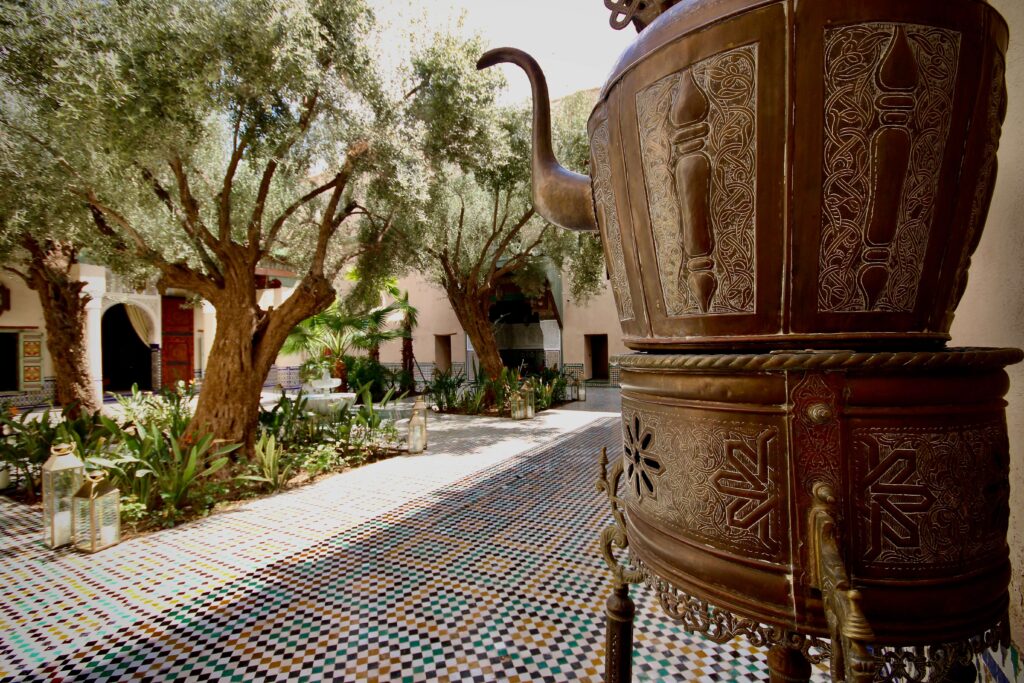
Disclosure: This article contains affiliate links, meaning I earn a small commission when you make a purchase. Affiliate links cost you nothing and ensure my content stays free!
Madrasa Ben Youssef
Entering the Madrasa Ben Youssef feels like stepping into 16th-century Morocco. This really is a must-visit site in Marrakech!
Located in the medina across from the Ali Ben Youssef Mosque, this impressive theological school showcases the rich artistic legacy of the Saadian dynasty. It once accommodated 900 students and was a central hub for Quranic education in the nation.
When visiting the madrasa, you can stroll through the elegant courtyard and narrow corridors where students used to reside. Be sure to visit the upper floor where a video illustrates the craftsmanship that went into the madrasa’s restoration. While it only has narration in Darija, the images alone allow you to appreciate the work that has gone into it.
While the architecture of the Madrasa Ben Youssef embodies classic Islamic design, it’s the main courtyard that will leave you in awe. The ground is adorned with beautiful zellige tiles arranged in intricate geometric patterns. Meanwhile, the walls are embellished with exquisite carved cedar wood and Kufic calligraphy.
Visit early in the morning or late in the day for the thinnest crowds!
Opening hours of the Madrasa Ben Youssef: 9 am to 7 pm
Entrance fee for the Madrasa Ben Youssef: 50 dh
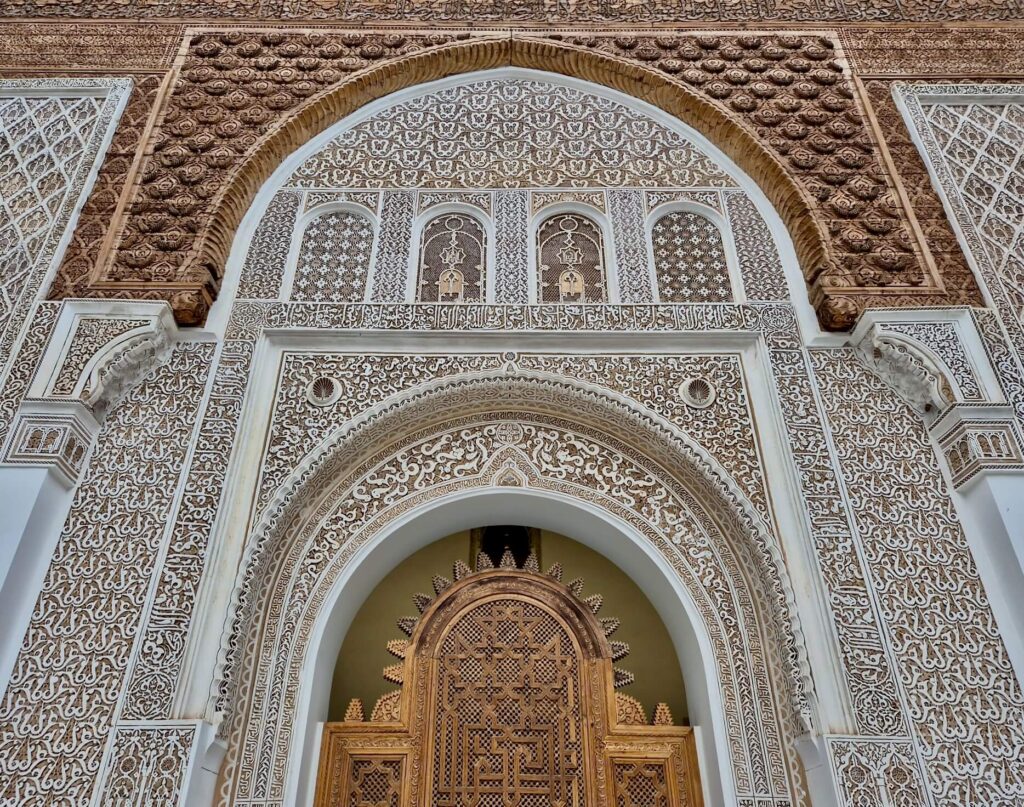
Bahia Palace
This 19th-century palace showcases Moroccan craftsmanship through its detailed zellige tilework and beautifully painted ceilings. It was originally constructed as the home of Grand Vizier Bou Ahmed during Sultan Moulay al-Hassan I’s reign.
Today, the palace provides a peek into the lavish lifestyles of the sultan’s elite.
The grand marble courtyard and elegant salons of the harem complex are the palace’s standout features. Also of note is the serene courtyard at the centre of the magnificent riad. Adorned with banana trees and citrus groves, it serves as a tranquil retreat from the bustling city beyond.
As you explore the palace’s expansive halls and gardens, it’s easy to envision the opulent existence of Moroccan nobility in times gone by.
Top tip:
As one of the best museums in Marrakech, Bahia Palace can get very busy. So visit early in the day or late in the afternoon to avoid the peak crowds. Also be aware that restoration work is ongoing, with some areas cordoned off to visitors.
Opening hours of Bahia Palace: 9 am to 5 pm
Entrance fee for Bahia Palace: 100 dh
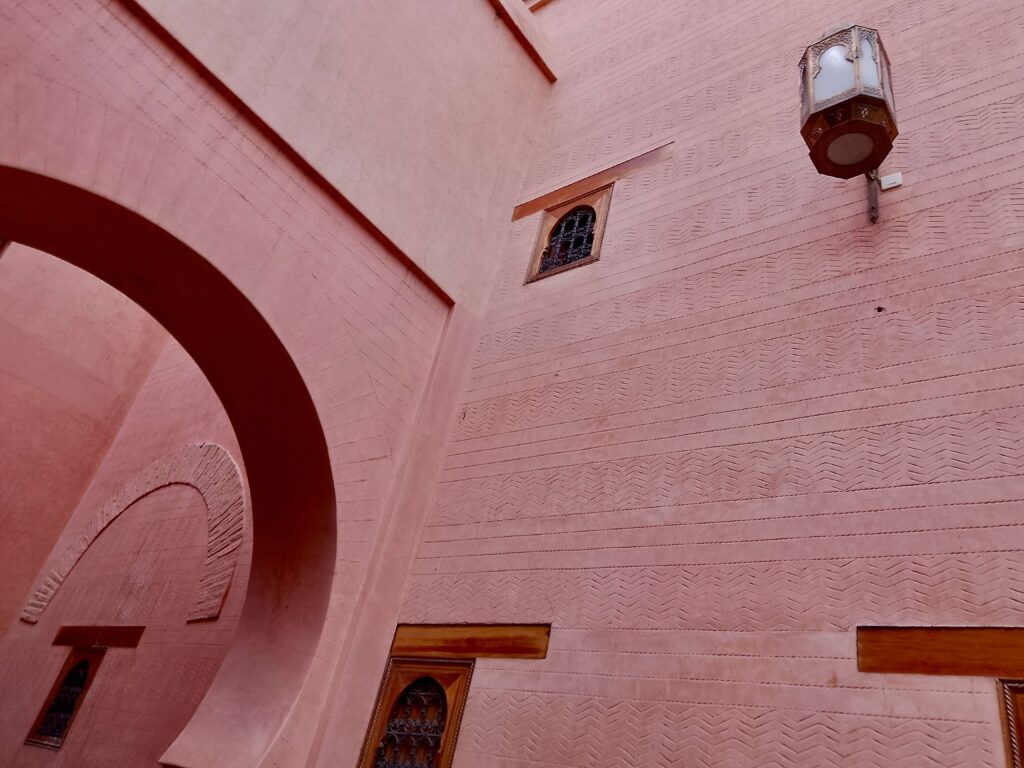
Le MAP Marrakech – Monde des Arts de la Parure
Tucked away in the Kasbah district (near El Badi Palace and the Saadian Tombs) is one of the best museums in Marrakech. It occupies an impressive building designed by the Franco-Lebanese architects Michel Charrière and Joseph Achkar.
The design of Le MAP was inspired by the Ben Youssef Madrasa, another attraction on this list of the best museums in Marrakech. It was constructed over the course of five years by some of the city’s leading artisans.
On display in its beautifully illuminated galleries are almost 3,000 pieces of clothing, jewellery and textiles. Many of these objects were collected by the Swiss founders, Marlène and Paolo Gallone. They hail from more than 50 different countries and reflect the richness and diversity of Indigenous cultures around the world.
Le MAPS Marrakech is a “must” for anyone interested in ethnography and the ideal museum to visit on a hot summer’s day (the gallery spaces are naturally cool). After exploring the exhibits, you can climb to the rooftop terrace to dine at SHAMS, which serves Levantine cuisine in a picturesque garden setting.
Opening hours of Le MAP Marrakech: 10 am to 5:30 pm (closed Mondays)
Entrance fee for Le MAP Marrakech: 100 dh
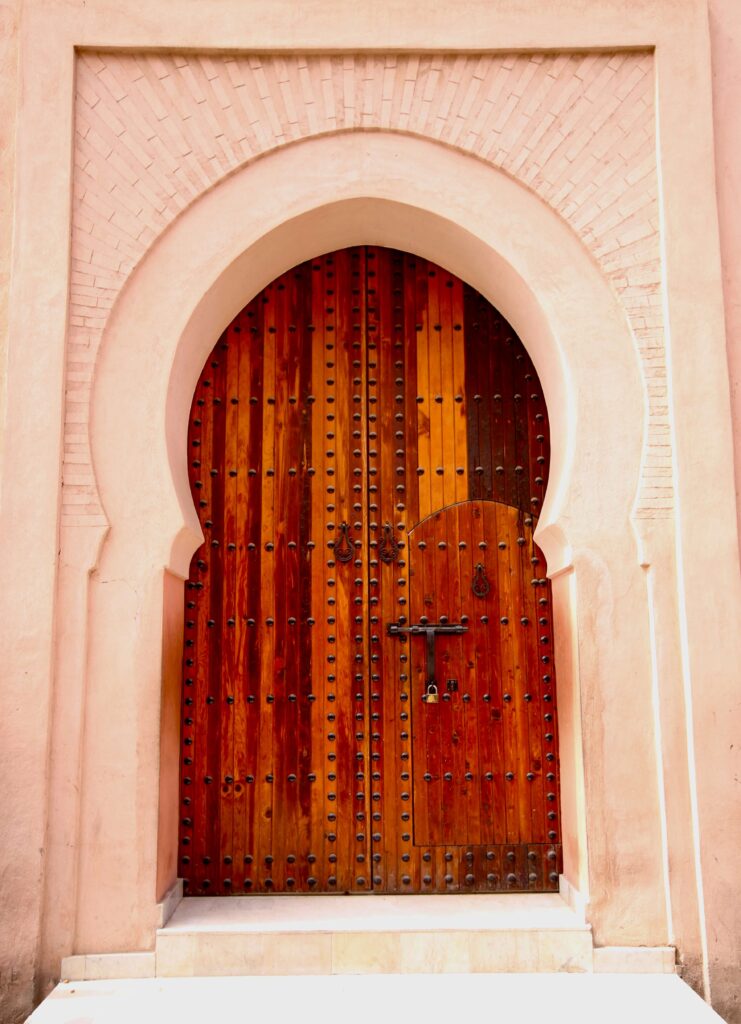
Marrakech Museum
Housed within Dar Mnebhi Palace (constructed in the early 20th century), the Marrakech Museum showcases the diverse cultural heritage and artistic traditions of Morocco. The palace beautifully reflects Andalusian architectural traditions.
A large central courtyard serves as the centrepiece. This originally formed part of an open riad filled with greenery.
Today, this courtyard has been fully paved and covered, creating a grand, airy atrium surrounded by roofed galleries and wall fountains. The area is adorned with colourful zellije tilework and exquisitely carved cedar wood. This makes the palace a worthy destination in its own right, even if you aren’t interested in the museum’s holdings.
Showcased within the Marrakech Museum is an impressive collection of historic objects, from traditional weapons and carpets to ornate Amazigh jewellery. Additionally, the museum hosts contemporary art exhibits and cultural events like theatre performances and concerts.
Opening hours of Museum of Marrakech: 9 am to 12 pm and 3 pm to 6 pm
Entrance fee for Museum of Marrakech: 50 dh
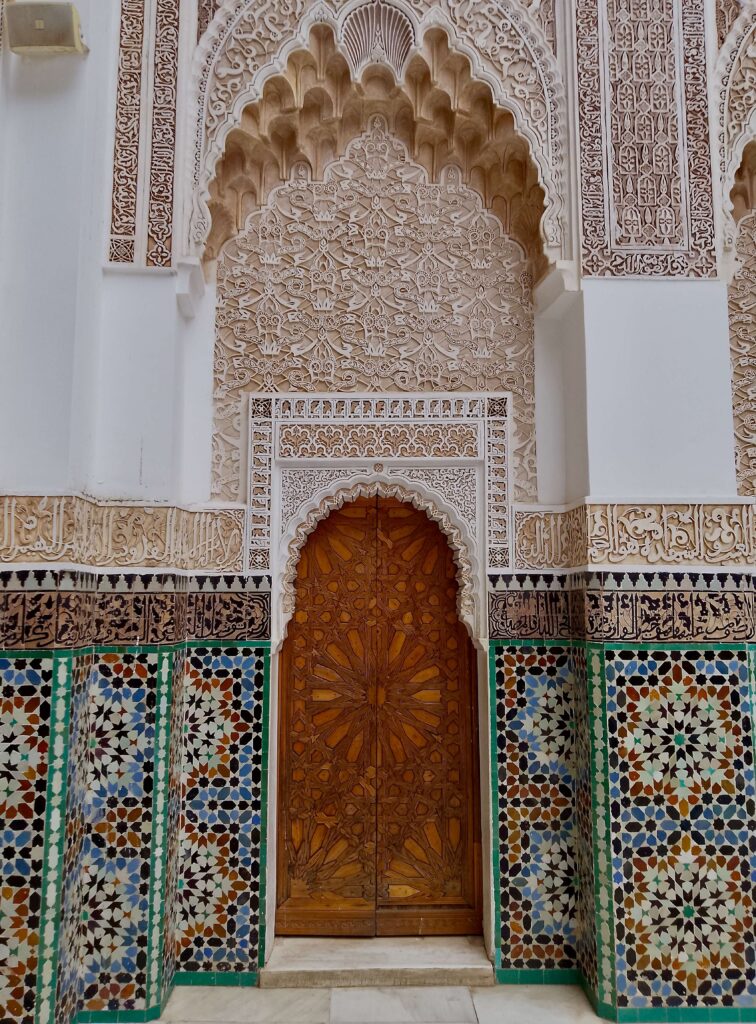
Dar Si Said Museum
At the time of writing, Dar Si Said was closed for renovation works. Check that it has reopened before visiting.
Constructed between 1894 and 1900, Dar Si Said was originally built by Si Sa’id ibn Musa. Over the years, it has evolved into one of the best museums in Marrakech. Its former owner served as the Grand Vizier and de facto ruler of Morocco during the reign of Sultan Abdelaziz.
After the French established their protectorate over Morocco in 1912, the palace transitioned to become the seat of regional leadership. It was eventually transformed into a museum in the 1930s.
Following Moroccan independence in 1957, the palace was divided, with one section becoming the National Museum of Weaving and Carpets. Its exhibits are dedicated to showcasing the country’s rich weaving traditions.
On display is a gorgeous collection of Moroccan rugs and carpets. In addition to urban carpets from Rabat and Casablanca, it exhibits weavings from the Atlas Mountains and beyond.
Top tip:
Many visitors think Dar Si Said is just as beautiful as Bahia Palace (and with a similar architecture). So it’s a good alternative if you’re travelling on a budget – the entrance fee to Dar Si Said is significantly less than Bahia Palace.
Opening hours of Dar Si Said: 10 am to 6 pm (closed Tuesdays)
Entrance fee for Dar Si Said: 30 dh

Maison de la Photographie de Marrakech
Created by Hamid Mergani and Patrick Manac’h in 2009, this photography-focused museum presents Morocco as captured through the lenses. It features the works of both renowned and anonymous photographers from the dawn of the medium in 1879 through to the 1960s.
The Maison de la Photographie’s extensive collection encompasses an array of photographic materials. On display are glass plates, postcards, newspapers and documentary films.
By preserving and curating these invaluable visual records, the museum has become not only an archive of Morocco’s photographic heritage. It’s also a repository of the country’s evolving ideas and narratives over the decades.
To share this treasure trove of knowledge and inspiration, the institution organises a diverse range of thematic exhibitions. These take place both within the walls of its medina-based location and through travelling showcases at partner cultural institutions.
As someone who loves photography, I honestly think this is one of the best museums in Marrakech.
Opening hours of Maison de la Photographie de Marrakech: 9:30 am to 7 pm
Entrance fee for Maison de la Photographie de Marrakech: 50 dh
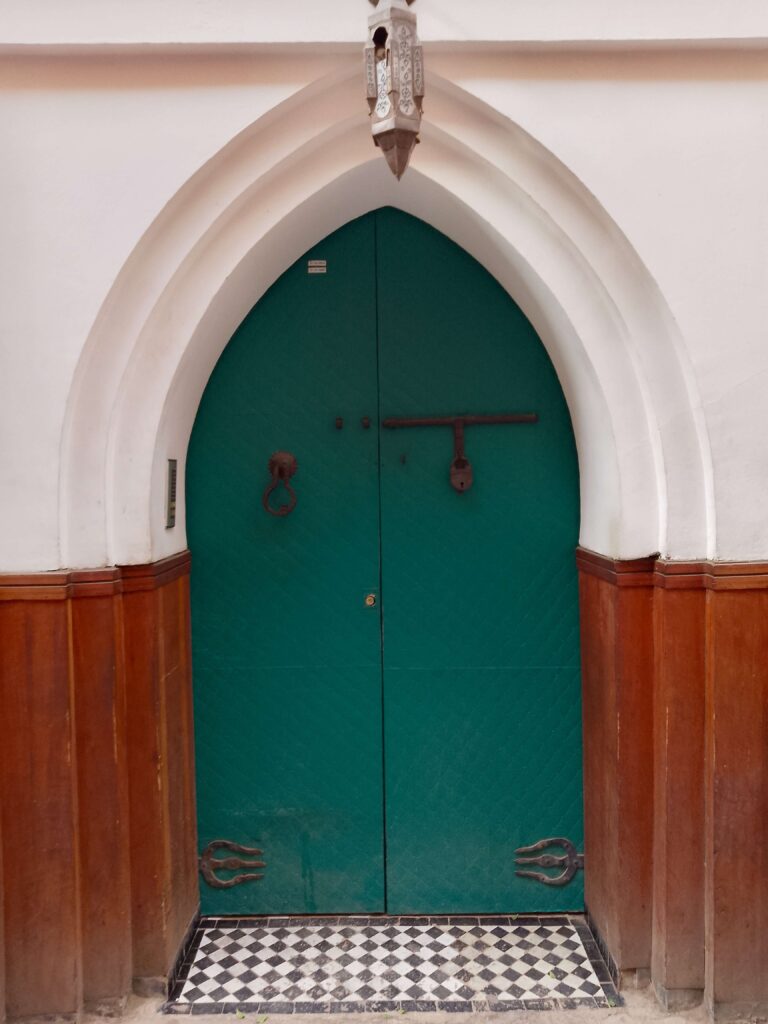
Dar El Bacha
Constructed in 1910, this ornate residence was once the private domain of Thami El Glaoui. This powerful pasha held significant political sway in southern Morocco during the French colonial era.
Designed to impress and entertain, the palace features exquisite architectural details that blend Moorish, Amazigh and European influences. It once hosted names like Charlie Chaplin and Winston Churchill.
Today, this historic site has been transformed into the Museum of Confluences, which showcases artworks, artefacts and objects that reflect the country’s rich heritage.
Within the permanent collection, you’ll find traditional handicrafts, religious items and ancient manuscripts. Meanwhile, temporary exhibits at Dar El Bacha highlight different facets of Moroccan culture.
Beyond the museum’s exhibits, Dar el Bacha also features a charming café, Bacha Coffee, which is housed in a beautifully preserved period salon. It specialises in serving premium Arabica beans and is a must-visit for coffee addicts (like me!)
Opening hours of Dar El Bacha: 9 am to 6 pm (closed Mondays)
Entrance fee for Dar El Bacha: 70 dh
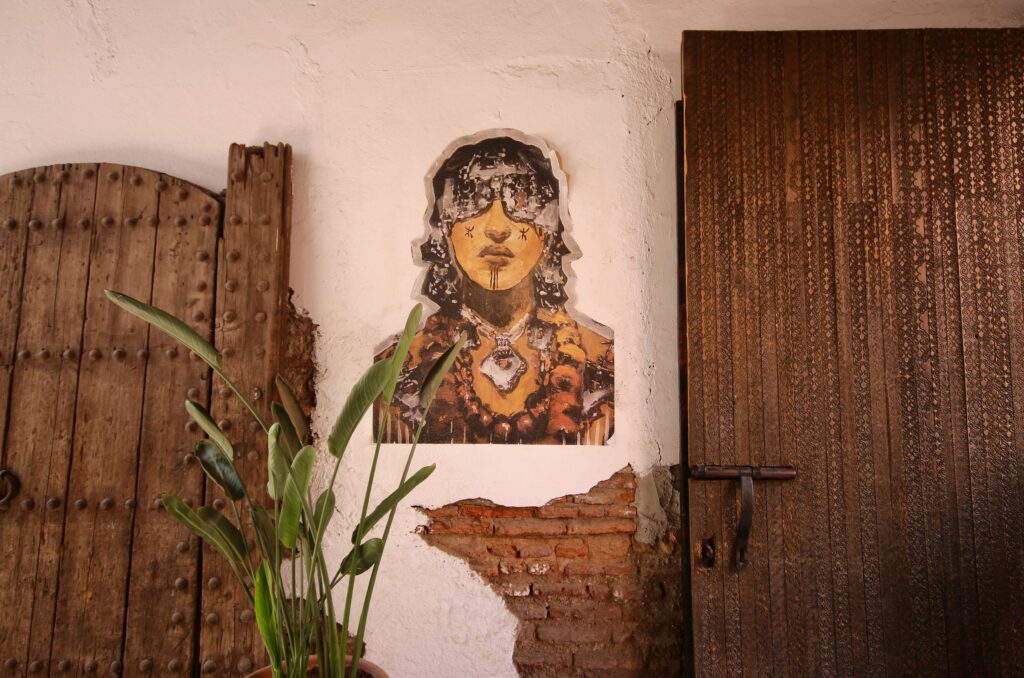
Tiskiwin Museum
At the time of writing, the Tiskiwin Museum was closed for renovation works. Check that it has reopened before visiting.
Housed in a traditional riad that once belonged to Bert Flint, this unique museum showcases an extraordinary collection. It was amassed over the course of more than six decades by the renowned Dutch anthropologist.
Flint’s lifelong passion for exploring North African cultures led him on countless journeys across the region. These spanned the Atlas Mountains, the Sahara Desert and the Sahel regions.
From Tuareg camel saddles to High Atlas carpets, each room of the Tiskiwin Museum represents a different “caravan stop” along the historic trade routes that connected Timbuktu to Marrakech.
Stepping into this eclectic museum is like embarking on a North African odyssey. Ultimately, its collection highlights Morocco’s role as a crossroads of commerce and cultural exchange.
While Flint meticulously documented an astounding array of indigenous arts and crafts, some visitors find the lack of English explanations to be a drawback. But if you’re happy to simply appreciate the objects on display, without necessarily having a lot of information behind the exhibits, then this Marrakech museum is sure to captivate.
Opening hours of the Tiskiwin Museum: 9 am to 12:30 pm and 2:30 pm to 6 pm
Entrance fee for the Tiskiwin Museum: 20 dh

Yves Saint Laurent Museum
Established in 2017, this cultural institution stands as a tribute to the legendary French fashion designer, Yves Saint Laurent. It’s even located on a street that bears his name.
The decision to build this museum in Marrakech was a natural one. Saint Laurent drew immense inspiration from the vibrant colours, rich textiles and captivating culture of the “Red City”.
The Yves Saint Laurent Museum was designed by the architectural firm Studio KO, blending traditional Moroccan elements with a modern, sculptural aesthetic. The earth-toned, cube-like structure is adorned with a lace-like pattern of bricks. This evokes the woven fabrics that Saint Laurent so masterfully incorporated into his fashion.
Housed within the museum is an extensive collection showcasing Saint Laurent’s illustrious career. This includes thousands of garments, accessories, sketches and multimedia displays that offer a comprehensive look into his creative process and contributions to the world of haute couture.
Beyond the main galleries, the museum also houses temporary exhibition spaces, a research library with rare Andalusian texts and volumes on Amazigh art.
Opening hours of the Yves Saint Laurent Museum: 10 am to 6:30 pm (closed Wednesdays)
Entrance fee for the Yves Saint Laurent Museum: 140 dh
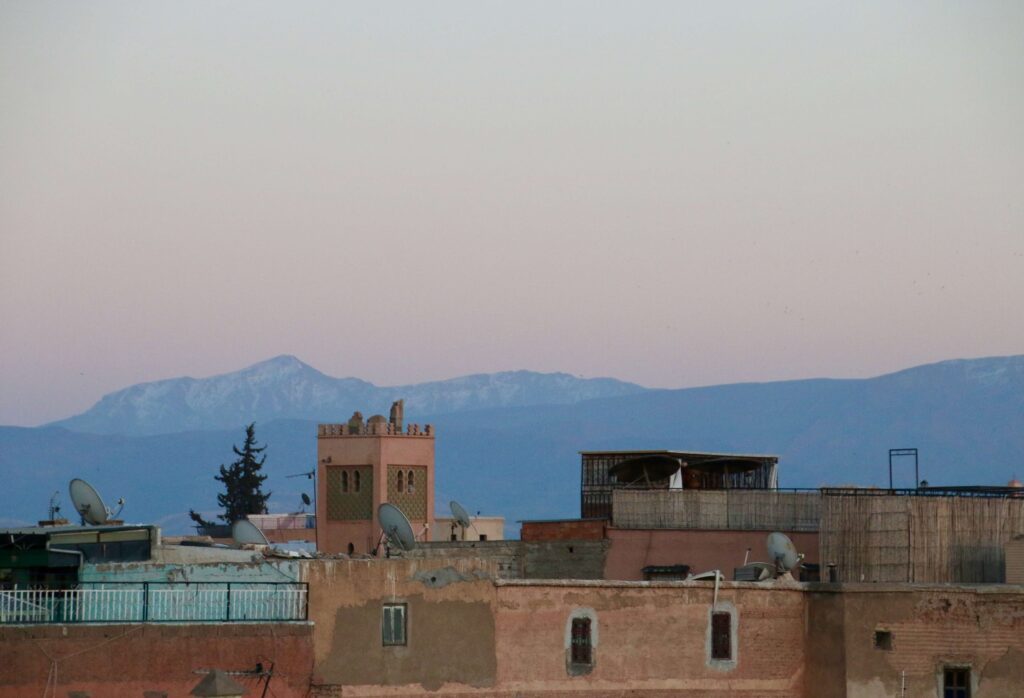
Musée Berbère Jardin Majorelle
Occupying the former studio of artist Jacques Majorelle, this museum offers a glimpse into the unique cultures of the Amazigh people of North Africa. The collection, curated by Pierre Bergé, boasts over 600 objects.
Each tells the story of a resilient and adaptive civilisation that has endured for millennia, their traditions and artistry still thriving today.
The museum is thoughtfully organised into distinct spaces, each dedicated to a particular aspect of Amazigh culture.
In addition to everyday objects and ceremonial artefacts, you’ll find an impressive collection of Amazigh costumes, textiles and jewellery. The ornaments, in particular, are a true highlight, symbolising the tribal identity and social standing of their wearer.
Before entering the exhibition rooms, you’ll find an overview of Morocco’s Indigenous history and the geographical distribution of the major tribes across the country. Innovative audiovisual elements further enhance the museum, presenting the Amazigh way of life in vivid detail.
This is definitely one of the best museums in Marrakech if you’re interested in learning more about Morocco’s Indigenous peoples.
Opening hours of the Musée Berbère Jardin Majorelle: 8 am to 6 pm
Entrance fee for the Musée Berbère Jardin Majorelle: 230 dh (includes entrance to Jardin Majorelle)

Moroccan Museum of Culinary Art
Occupying an 18th century palace, this expansive museum is dedicated to all things associated with Moroccan gastronomy. Aside from being one of the best museums in Marrakech, it really is one of my favourite places in the “Red City”.
It boasts two magnificent interior courtyards adorned with zellige tiles and elegantly sculpted columns where you can relax away from the tourist crowds. At the centre of the first courtyard stands a grand Carrara marble fountain framed by olive trees. It really is sublime and still feels like somewhat of a hidden gem.
Today, the palace houses the Moroccan Museum of Culinary Art, offering an immersive exploration of the country’s gastronomic heritage.
On the second floor, you’ll find 34 interactive cooking stations where hands-on classes are held. This is a great place to learn all about blending aromatic spices, mastering oven-baked techniques and unlocking the flavours of iconic Moroccan dishes.
Beyond the exhibits and cooking classes, the Moroccan Museum of Culinary Art also features a rooftop restaurant with stunning views across the medina. There’s also charming tea salon (with incredible murals) where you can enjoy a traditional mint brew after your visit.
Opening hours of the Moroccan Culinary Arts Museum: 9 am to 8 pm
Entrance fee for the Moroccan Culinary Arts Museum: Free
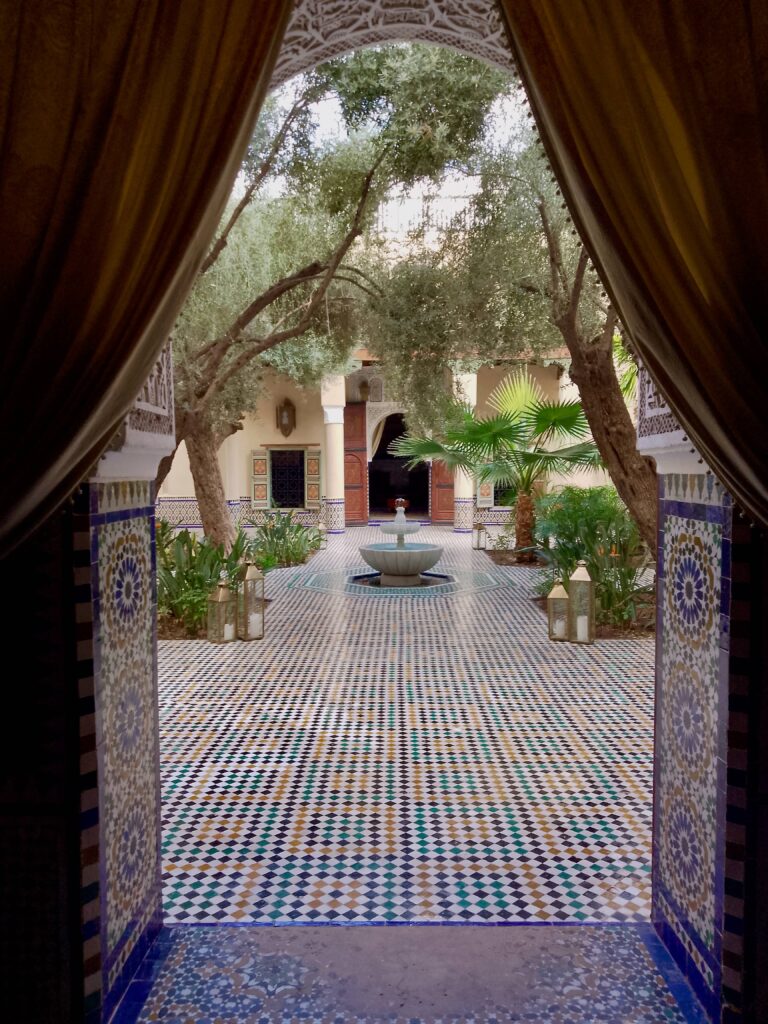
Musee du Parfum
Nestled within the historic charm of a 19th-century riad is this small but captivating museum. It is entirely dedicated to the art and history of perfume. As you step through its doors, you are swept into a world celebrating the craft of perfumery, the ancient practices of aromatherapy and the holistic realm of well-being.
Through interactive exhibits and displays, the Musee du Parfum showcases the wealth of scents that have long been woven into Moroccan culture. From the distillation of floral waters to the extraction of precious essential oils, it reveals the ancestral know-how that has been passed down through generations.
Rare, antique objects used in the creation of perfumes are showcased, together with exhibits about the medicinal and aromatic plants utilised in the revered ritual of the hammam. Beyond its exhibitions, the museum also offers engaging activities and workshops for guests to immerse themselves in this olfactory universe.
Not only can you purchase fragrances and carriers at reasonable prices but even create your own perfume to take home.
Opening hours of the Musee du Parfum: 9 am to 5:30 pm
Entrance fee for the Musee du Parfum: 40 dh

PLAN YOUR TRIP WITH MY FAVOURITE RESOURCES:
Find hotels via Booking
Book tours and attractions via Viator or GetYourGuide
Find a rental car via Discover Cars
Book flights via Kiwi or Booking
Search for buses and trains via 12Go or Omio
Get travel insurance via SafetyWing
Buy a digital eSIM with Airalo
By purchasing through my links, you’ll be supporting my website at no additional cost to you
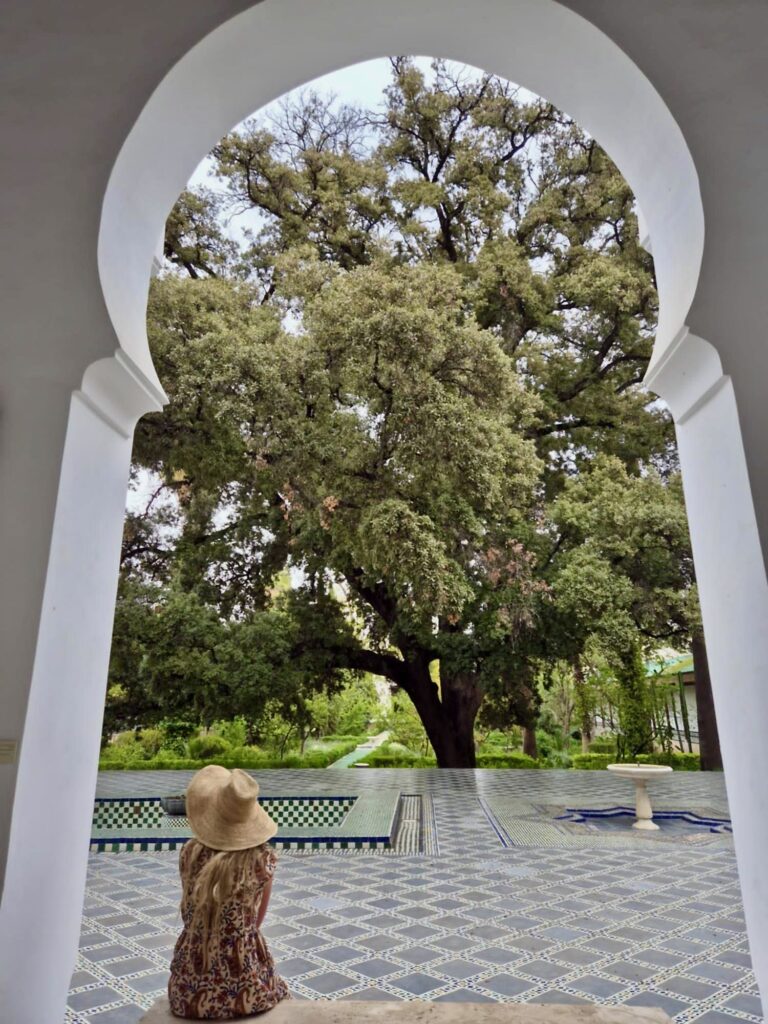
About Me
I’m Malika, a global traveller who first visited Morocco in 2014 before marrying a local and settling down in a little village on the Atlantic coast. Over the years, I’ve developed an intense love for Morocco, its incredible landscapes, storied cities and the exceptionally generous hospitality of its people.
Malika in Morocco is a place to share my years of experience exploring the country, from north to south and from the Atlantic Ocean to the Sahara Desert. As a resource for travellers visiting Morocco, I want to encourage others to experience this captivating destination the way they desire, whether that’s independently or under the expert guidance of local tour operators.
I believe strongly in supporting responsible and sustainable tourism initiatives while inspiring travel experiences that are life-impacting and mutually beneficial for both travellers and locals.
-
9 Best Family Hotels in Marrakech for a Kid-Friendly Stay
Looking for the best family hotels in Marrakech? Explore this curated collection of riads, resorts and apartments that cater to travellers visiting Morocco with kids. There’s no denying it – Marrakech is an incredible destination and one of Morocco’s most popular places to visit. But it can also be an assault on the senses and…
-
Stunning 5-Star Marrakech Hotels for a Luxe Stay in the “Red City”
Looking for the best 5-star Marrakech hotels? Discover 10 incredible places to indulge in a high-end stay in Morocco’s “Red City”. There’s no denying it – Marrakech is an irresistible getaway. It’s located a short flight from many European destinations but with the feeling of being a world away. In my opinion, this historic North…
-
5 Unforgettable Tours to the Sahara Desert from Marrakech
Looking for the best tours to the Sahara from Marrakech? Explore this curated collection of multi-day Moroccan desert trips, including budget-friendly small group adventures and private desert tours in Morocco. Spending a night under the star-studded sky of the Saharan desert is an amazing experience. It’s something that I’ve been lucky enough to do. The…
-
7 Best Places to Stay in Ait Benhaddou: Morocco’s Ancient Ksar
Looking for the best places to stay in Ait Benhaddou? Explore this curated collection of auberges, guesthouses and hotels, all within easy reach of the UNESCO World Heritage-listed ksar. Set against the dramatic backdrop of the High Atlas Mountains lies the fortified ksar of Ait Benhaddou – an ancient walled city that is now designated as…
-
10 Best Budget Riads in Marrakech: Morocco’s “Red City”
Looking for the best budget riads in Marrakech? Discover 10 incredible places to stay if you’re planning an affordable trip to Morocco’s “Red City”. Every time I visit Marrakech, I like to find a new riad to stay in. Considering the city’s abundance of options, I think it will be a never-ending quest! I love…
-
5 Best Luxury Hotels in Marrakech with a Pool
Looking for the best luxury hotels in Marrakech with a pool? Explore this curated collection of riads, resorts and boutique stays. All boast a swimming pool for cooling off in Morocco’s “Red City”. Framed by the Atlas Mountains, Marrakech is deservedly one of Morocco’s top tourist destinations. But it can also become a sweltering cauldron…
